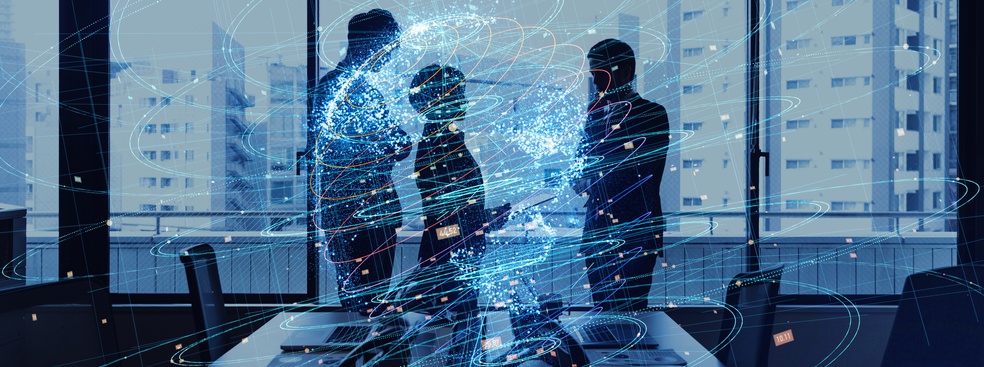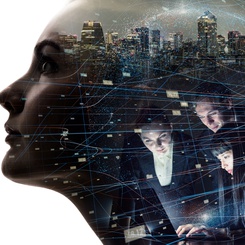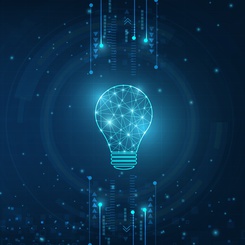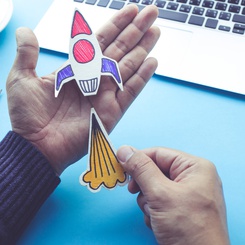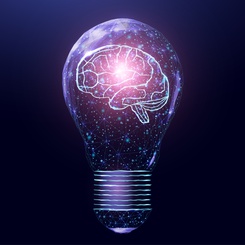In this age of digital disruption, enterprise innovation is more important than ever before – if not completely necessary for survival. Artificial intelligence (AI) is one of the most useful new technologies that can be leveraged to help enterprises to generate and build disruptive innovations: new technologies that make more widely accessible valued products and services. Specifically, new AI technologies could be designed to help enterprise innovators gain new insights into identifying the right kind of problems to be pursued, and in so doing, create new value for each and every individual in an organization, a community, and throughout society. To this end, I draw on research on data distortion, mental models, and collaboration dynamics to offer three ideas on how AI might be designed to mitigate the inherent biases of human cognition to help innovators and enterprises find and pursue the right problems to solve in search of innovation opportunities.
Problem Finding and Innovation
In their seminal work on problem finding, Jacob Getzels and Mihaly Csikszentmihalyi[1] posit that creative outcomes originate from those who engage in a continuous process of reformulating their own perspective of the problem at hand. In other words, creativity is best achieved by continuously reframing a problem to find the right problem to solve. It turns out that finding the right problem to solve is actually quite difficult – in large part because it is not natural. For one, the natural tendency is to jump straight to brainstorming when confronted with a problem. The natural tendency to brainstorm immediately - rather than engaging in problem finding – reflects a subjective understanding of the problem biased by the limitations of the individual perspective, and therefore inhibits innovation. To mitigate this inherent bias, enterprises have strategically approached innovation with data, expertise, and collaboration.
Data Distortion
First, enterprises collect data to mitigate the bias inherent in problem finding. Collecting data is based on the premise that the more data that you can collect about your target market or consumer, the deeper your customer insight is likely to be, and there you will be able to find the right [customer] problem to solve. However, research has shown that we tend to collect information that is consistent with our initial or emerging preferences[2]. That is, our natural tendency is to collect and emphasize data that strengthens or confirms our initial biased understanding of problem, rather than data that provides an alternative understanding of the problem.
To this end, AI can make a significant contribution to innovation: AI can be developed to support non-biased data collection to foster effective problem finding. It might be designed with a Gaussian mixture model algorithm characteristic of unsupervised learning to augment the cognition underpinning data collection for innovation by aiding the innovator to develop deeper (and more accurate) insights about the kind of “jobs” that a customer needs done. In doing so, the innovator is able to strategically identify and decide which opportunities for innovation to pursue and develop.
Mental Models
Second, enterprises recruit innovators with the right expertise. Research on the cognition underpinning strategy making has examined the role of the innovator’s internal mental representation – or mental model – of the firm’s competitive position[3]. The innovator’s internal mental representation is formed by the innovator drawing an analogy between his/her previous experiences and the situation at hand to identify viable competitive advantages for his/her firm, particularly when faced with the challenge of coming up with strategic solutions to novel situations.
To this end, AI can make another significant contribution to innovation: AI can be developed to support imbalanced mental models to foster effective problem finding.
Collaboration Dynamics
Third, enterprises assemble innovation teams. Innovation teams are typically set up to maximize diversity in expertise and knowledge. However, heterogeneous information sets, heterogeneous cognitive structures, and heterogeneous goals – in innovation teams – create representational gaps that impede successful strategic problem formulation. The success of strategy formulation is measured by comprehensiveness and relevance. As such, research suggests that innovation teams – characterized by diversity in expertise and knowledge – achieve comprehensiveness and relevance when team members are able to constructively challenge each others’ opinions and ideas in such way that individual team members are able to engage in less biased information processing to achieve a multifaceted understanding of the problem at hand[4].
To this end, AI can make a third significant contribution to innovation: AI can be developed to support collaboration dynamics to foster effective problem formulation in innovation teams. For instance, in a study of routines at a fast-growing retail enterprise operating a chain of approximately 400 stores geographically dispersed nationwide, Scott Sonenshein[5] discovered how this enterprise used routines to establish a clear organizational identity and foster creativity across all the stores. That is, customers can walk into any store in any geographical location and instantly recognize the brand, and yet the customer gets a unique shopping experience that can only be found in that particular store. The retail enterprise achieves this by establishing a set of routines that guides store employees which actions are to be standardized (e.g. the jewelry display should be placed at the front of the store) and which actions they have the freedom to express their creativity (e.g. there is no restriction on which pieces of jewelry to be displayed and how they are to be displayed).
In sum, I believe that AI offers an opportunity for us to innovate like never before, to create new value not only for enterprises but, more importantly, for society at large. Specifically, I believe that new AI technologies should be designed to help innovators gain new insights into identifying the right kind of problems to be pursued by innovators, and in so doing, create new value for each and every individual in an organization, a community, and throughout society.
[1] Getzels, J. W., & Csikszentmihalyi, M. (1976). The Creative Vision: A Longitudinal Study of Problem Finding in Art (New York, NY: Wiley)
[2] Russo, J. E. Carlson, K. A., Meloy, M. G., & Yong, K. (2008). The goal of consistency as a cause of information distortion. Journal of Experimental Psychology: General, 137(3): 456-470.
[3]Baer, M., Dirks, K. T., & Nickerson, J. A. 2013. Microfoundations of strategic problem formulation. Strategic Management Journal, 26: 691-712.
[4]Yong, K., Sauer, S. J., & Mannix, E. A. (2014). Conflict and creativity in interdisciplinary teams. Small Group Research, 45(3): 266-289.
[5]Sonenshein, S. (2016). Routines and creativity: From dualism to duality. Organization Science, 27(3): 739-758.
